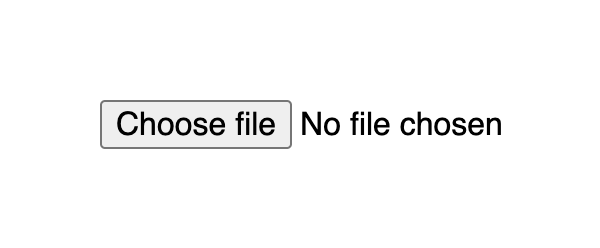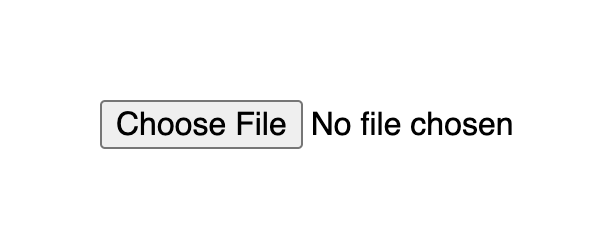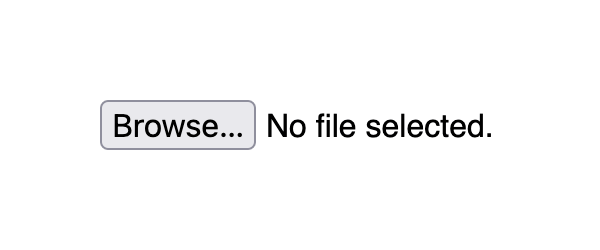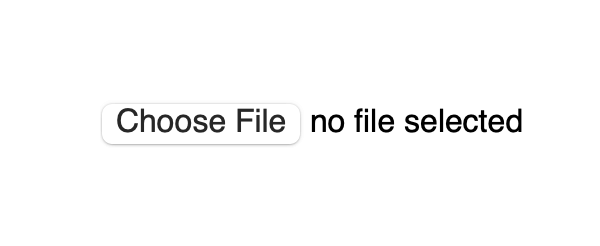- Стилизация Input File
- Пример 3: Брутальный Input File
- HTML разметка
- CSS стилизация
- JS скрипт
- Поделиться с друзьями
- Похожие статьи:
- Комментарии ( )
- Программирование
- Продвижение сайтов
- Полезные инструменты
- Произвольный вид поля file в html-форме, одинаковый во всех браузерах
- Custom styled input type file upload button with pure CSS
- Markup
- Styling
- Styling the upload file block
- Styling the upload file button
- Styling the the click/drop zone
- Handling drag and drop events
- Demo
Стилизация Input File
Данный скрипт позволяет менять внешний вид Input File (появится зеленая галочка) после того, как файл будет загружен.
(function() { 'use strict'; $('.input-file').each(function() { var $input = $(this), $label = $input.next('.js-labelFile'), labelVal = $label.html(); $input.on('change', function(element) { var fileName = ''; if (element.target.value) fileName = element.target.value.split('\\').pop(); fileName ? $label.addClass('has-file').find('.js-fileName').html(fileName) : $label.removeClass('has-file').html(labelVal); }); }); })(); Пример 3: Брутальный Input File
HTML разметка
CSS стилизация
@import "https://fonts.googleapis.com/css?family=Varela+Round"; .example-3{box-sizing:border-box} .example-3{position:relative;font:1em/1.6 "Varela Round",Arial,sans-serif;color:#999;font-weight:400;max-width:25em;padding:1em;} .example-3 h2{font-weight:400} .example-3 .filupp > input[type="file"]{position:absolute;width:1px;height:1px;padding:0;margin:-1px;overflow:hidden;clip:rect(0,0,0,0);border:0} .example-3 .filupp{position:relative;background:#242424;display:block;padding:1em;font-size:1em;width:100%;height:3.5em;color:#fff;cursor:pointer;box-shadow:0 1px 3px #0b0b0b} .example-3 .filupp:before{content:"";position:absolute;top:1.5em;right:.75em;width:2em;height:1.25em;border:3px solid #dd4040;border-top:0;text-align:center} .example-3 .filupp:after{content:"\f178";font-family: FontAwesome;-webkit-transform:rotate(-90deg);-moz-transform:rotate(-90deg);-ms-transform:rotate(-90deg);-o-transform:rotate(-90deg);transform:rotate(-90deg);position:absolute;top:.65em;right:.45em;font-size:2em;color:#dd4040;line-height:0} .example-3 .filupp-file-name{width:75%;display:inline-block;max-width:100%;overflow:hidden;text-overflow:ellipsis;white-space:nowrap;word-wrap:normal} JS скрипт
$(document).ready(function() { $('input[type="file"]').change(function(){ var value = $("input[type='file']").val(); $('.js-value').text(value); }); }); Поделиться с друзьями
Похожие статьи:
Комментарии ( )
Отличная стилизация Input! Давно искал вариант со скрепкой.
Но при попытке передать файл на сервер, у меня появилась ошибка «Не удалось открыть поток: отказано в доступе». Что я сделал?
Я загуглил эту тему и вот что нашел. Может кому то пригодиться.
1. Узнайте код ошибки php. Поместите этот код в начало файла php.
ini_set(‘error_reporting’, E_ALL);ini_set(‘display_errors’, 1);ini_set(‘display_startup_errors’, 1);
2. К папке должен быть доступ 777. Проверь это.
3. Тег должен иметь атрибут enctype = «multipart/form-data» method = «post».
4. Полностью открой и посмотри массив $ _FILES на сервере.
print_r ($_FILES);
5. Открой и посмотри массив $ _FILES на клиенте.
file = document.getElementById(«get_avatar»).files[0];parts = file.name.split(‘.’);
var a = file.size;var b = parts.pop();var c = file.type;alert(a+b+c);
6. Проверь права пользователя и группы пользователей на каталог.
cd /var/www/your_site/user
ls -l
Подробнее: http://profi.spage.me/php/check-file-input-on-php-and-jquery-why-error
Вы должны авторизоваться, чтобы оставлять комментарии.
Программирование
Продвижение сайтов
Полезные инструменты
Произвольный вид поля file в html-форме, одинаковый во всех браузерах
Не смотря на развитие, внедрение новых стандартов и плюшек в браузерах, у нет единых стандартов, как отображать элемент/> по умолчанию. Более того, у этого элемента нет атрибутов, позволяющих его в какой-то мере стилизовать.
Из-за необходимости привести это поле формы к единому виду во всех браузерах и «вписать» в разработанный дизайн, после поисков и анализа материалов в интернете был разработан метод замены вида поля формы на html+css, и js для расширения функциональности.
Как по умолчанию выглядит это поле?
Так он выглядит в Internet Explorer 9:
А так — в Firefox:
В Google Chrome:
В Opera:
В Safari:
Стилизация поля file
.fileform < background-color: #FFFFFF; border: 1px solid #CCCCCC; border-radius: 2px; cursor: pointer; height: 26px; overflow: hidden; padding: 2px; position: relative; text-align: left; vertical-align: middle; width: 230px; >.fileform .selectbutton < background-color: #A2A3A3; border: 1px solid #939494; border-radius: 2px; color: #FFFFFF; float: right; font-size: 16px; height: 20px; line-height: 20px; overflow: hidden; padding: 2px 6px; text-align: center; vertical-align: middle; width: 50px; >.fileform #upload
Теперь во всех браузерах поле формы выглядит одинаково, при этом форма выбора файла всё так же появляется по клику и на поле и на кнопку:
Главный недостаток полученного решения от стандартной формы — оно никак визуально не сигнализирует о том, что файл был выбран. Эта проблема решается с использованием javascript.
Добавление подписи о выбранном файле
Добавим к полю функцию-обработчик событий, а к блоку — еще один блок-заголовок и, конечно, его стиль:
Сама функция-обработчик получает полное имя выбранного файла, отбрасывает путь (с проверкойдля разных файловых систем), сохраняет имя с расширением в переменную filename и записывает его в блок fileformlabel.
function getName (str) < if (str.lastIndexOf('\\'))< var i = str.lastIndexOf('\\')+1; >else < var i = str.lastIndexOf('/')+1; >var filename = str.slice(i); var uploaded = document.getElementById("fileformlabel"); uploaded.innerHTML = filename; > Теперь поле формы выглядит так (при этом можно менять его размер, цвет, шрифт и выравнивание):
Данная заметка — реализация метода, предложенного в статье «Кастомизация input type=”file” с помощью CSS»
Custom styled input type file upload button with pure CSS
In this guide I’ll show you how to create a stylish and user friendly file upload button with pure CSS and HTML.
Markup
To upload files you’ll need to use the input tag with type=»file» attribute. Additionally you can specify which file types you’re allowing to upload via accept attribute.
This markup produces a button with a Choose file title followed by a text which indicates the file name when selected. By default it is No file chosen.
Input with type file default look differs on different browsers:



Styling
The upload file widget structure consists of a block that displays a button and a file name. A user can click anywhere inside the block or drag a file from the desktop and it will open up the upload window.
Styling the upload file block
If you apply styles for the input[type=file] selector it will set them for the whole widget block, that is the button and text.
input[type=file] width: 350px; max-width: 100%; color: #444; padding: 5px; background: #fff; border-radius: 10px; border: 1px solid #555; > The result already looks much better as it indicates the zone where user is able to click or drag the file.
Styling the upload file button
By default, the Choose file button has a plain user-agent style. To style the button with CSS you should use the ::file-selector-button pseudo-element to select it. It is supported in all modern browsers.
input[type=file]::file-selector-button margin-right: 20px; border: none; background: #084cdf; padding: 10px 20px; border-radius: 10px; color: #fff; cursor: pointer; transition: background .2s ease-in-out; > input[type=file]::file-selector-button:hover background: #0d45a5; > Styling the the click/drop zone
If you wich to go a bit further, you can create a large zone where user can click and drag files. This large zone will make it easier for people to use the widget, as it don’t require to be that precise when dragging a file, especially on smaller screens.
To implement a large drop zone, you’ll need to wrap your file upload input into a label tag and specify a description text that will let users know how to use the widget.
for="images" class="drop-container" id="dropcontainer"> class="drop-title">Drop files here or type="file" id="images" accept="image/*" required> For the layout, we need to set display to flex with flex related properties for positioning. The height and padding properties for proportion. And finally add some fancy styles like border and hover effects to highlight the file upload zone and you’re ready to go.
.drop-container position: relative; display: flex; gap: 10px; flex-direction: column; justify-content: center; align-items: center; height: 200px; padding: 20px; border-radius: 10px; border: 2px dashed #555; color: #444; cursor: pointer; transition: background .2s ease-in-out, border .2s ease-in-out; > .drop-container:hover background: #eee; border-color: #111; > .drop-container:hover .drop-title color: #222; > .drop-title color: #444; font-size: 20px; font-weight: bold; text-align: center; transition: color .2s ease-in-out; > Handling drag and drop events
Additionally, you can handle cases when the user will try to drag the file over the drop area. CSS alone cannot handle such cases, so we can add a little bit of JavaScript.
There are two points to consider to improve UX for the drop field:
- Indicate the drop area when the user is dragging a file over it
- Make it possible to drop a file inside the drop area, and not just the input element
To indicate drop area when user is dragging a file over it, we’ll need to use the dragenter and dragleave events. Both on the label tag, since it represents the drop area. For each event we add or remove a CSS class accordingly.
Since user will be dropping to the label tag we also need to set the input value with the file. To do that we need to do 2 things:
- Set dragover event for the label tag, set e.preventDefault() and pass false as the third parameter for the addEventListener method
- On drop event, we need to set the input’s files property to the file via fileInput.files = e.dataTransfer.files
const dropContainer = document.getElementById("dropcontainer") const fileInput = document.getElementById("images") dropContainer.addEventListener("dragover", (e) => // prevent default to allow drop e.preventDefault() >, false) dropContainer.addEventListener("dragenter", () => dropContainer.classList.add("drag-active") >) dropContainer.addEventListener("dragleave", () => dropContainer.classList.remove("drag-active") >) dropContainer.addEventListener("drop", (e) => e.preventDefault() dropContainer.classList.remove("drag-active") fileInput.files = e.dataTransfer.files >) As for styles, we can use similar styles to :hover state, but this time with a designated class:
.drop-container.drag-active background: #eee; border-color: #111; > .drop-container.drag-active .drop-title color: #222; > Demo
See the full example on CodePen:
See the Pen Untitled by Nikita Hlopov (@nikitahl) on CodePen.








